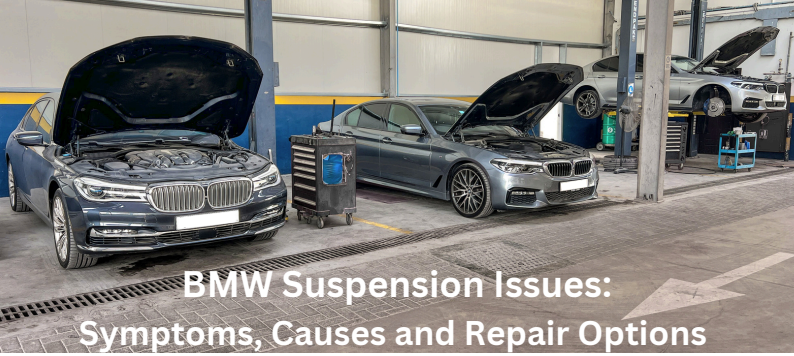
Owning a BMW isn’t about practicality,
It’s about feeling alive behind the wheel…
Germans have a reputation for doing things properly whether it’s football, engineering or fine tuning machines that make the rest of the world admire. Of course, no list would be complete without mentioning their legendary car manufacturers the ones whose creations still end up on every kid’s bedroom wall.
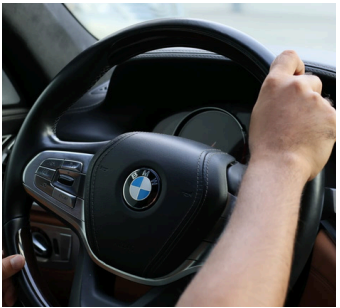
Among that list of legends, BMW remains
the perfect balance between machine
and driver, connecting them to road like
no other.
It doesn’t just move. It drives. And it does so
with the kind of precision that makes you
forgive every single warning light it throws at
you later.
Well, the kind of person who goes for a BMW is usually someone who enjoys a bit of turbulence in life, because peace is boring!!! Now, I could go on and on about BMW; the handling, the noise, the way it seduces you into taking the long way home but this isn’t a love letter. This blog focuses on one of the
key elements that gives BMW its unique driving feel: The Suspension.
That beautifully complex, sometimes temperamental system of arms, springs, and sensors that gives you that perfect cornering feel right before it gives your wallet a mild panic attack. We’ll dive into
- How BMW suspension works.
- Key suspension parts every BMW owner should know.
- How to spot problems before they turn into expensive repair bills.
By the end of this, you’ll not only know how your BMW stays glued to the road but also understand how to maintain it properly to save on repair costs.

BMW’s suspension system isn’t just built for comfort, it’s engineered for control. Unlike regular sedans that prioritize a soft and cushioned ride, BMW designs its suspension to strike the perfect balance between comfort and handling precision. The goal is simply to keep all four wheels planted firmly on the road, no matter how aggressive the turn or uneven the surface.
What makes BMW unique is how intelligently its system works with the car’s overall dynamics. The suspension isn’t an isolated component; it communicates with the car’s steering, braking, and traction systems. When you take a sharp corner or accelerate out of a bend, the sensors adjust damping, ride height, and even the torque distribution to keep the car stable yet responsive.
Most BMW models use an advanced multi-link suspension at the rear and a double wishbone or MacPherson strut setup at the front. These systems allow each wheel to move independently, reducing body roll and maintaining better contact with the road surface. In performance models like the M-series, the setup is even more refined with adaptive dampers, electronically controlled shock absorbers that adjust stiffness in real time depending on driving conditions.
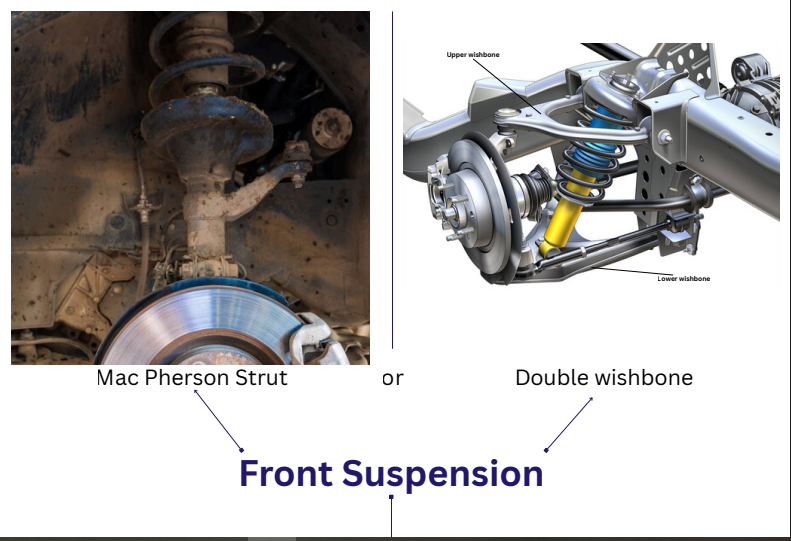
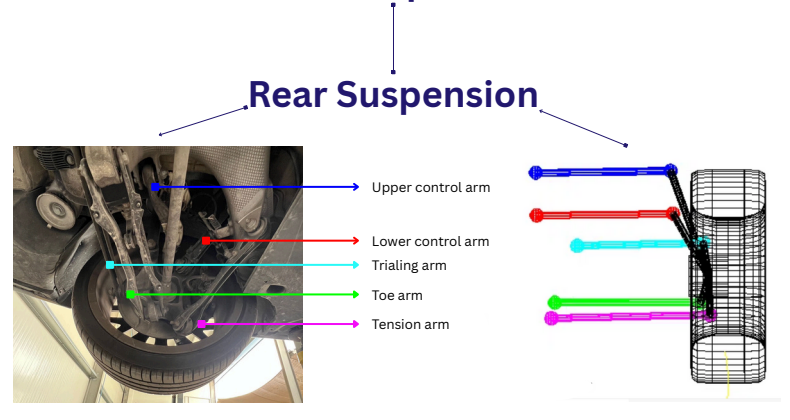
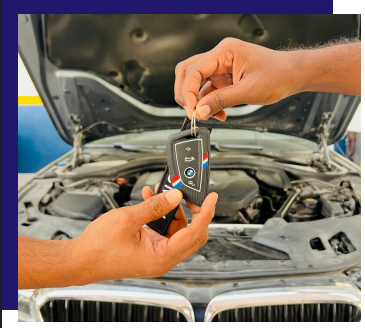
Ride Height Sensor:
An electronic sensor that measures how high or low the car sits and helps adjust the air suspension automatically.
Compressor Unit:
The heart of the air suspension system that pumps compressed air to the air springs to maintain proper ride height and comfort.
Calibration:
The process of electronically setting or resetting suspension levels to ensure the sensors and height adjustments are accurate.
Shock Absorber:
A shock absorber is a hydraulic part that controls how your suspension moves up and down. It keeps the ride smooth and stable by preventing the car from swaying after going over bumps.
Strut (MacPherson Strut):
A structural part of the suspension that combines a shock absorber and spring into one unit.
Stabilizer Link (Link Rod):
A short link rod that connects the suspension to the sway bar, helping reduce body roll when turning
Sway Bar (Anti-Roll Bar):
A metal bar that connects the left and right sides of the suspension to keep the car level and stable during cornering.
Bump Stop / Dust Boot:
A rubber cushion that prevents the suspension from bottoming out.
Wishbone (Control Arm):
A triangular or “A”-shaped arm that holds the wheel hub in place and allows the wheel from oscillating.
Mount (Strut Mount / Top Mount):
A rubber and metal component that attaches the strut or shock absorber to the car’s body, reducing vibration and noise.
Bush :
A flexible rubber or polyurethane bushing placed in between metal suspension components to absorb vibration and noise.
Air Spring:
A rubber bladder that replaces the coil spring in air suspension systems, using compressed air to adjust ride height and comfort.

Case Study:

When a BMW 750 Li Needed a Monday Morning Rescue at Advance Auto
It was a regular Monday morning, the kind where coffee feels like a lifeline and motivation is still stuck somewhere in the weekend. Our service advisors were just settling in with their first cup when we got a call from Mr. Alex Presley, one of our long time BMW enthusiast customers.
Alex requested us to collect his BMW 7 series key from his home, as his car was parked near a restaurant in Al Qudra. That Sunday, he was out with friends at Al Qudra Lake, but on the way back, he noticed strange noises and vibrations coming from his suspension. Being a cautious driver, he decided not to take any risks and parked his BMW safely before calling us.
Vehicle Reception & Initial Check
Once the car was brought to Advance Auto by our roadside assistance service, we immediately noticed that the front end was sitting unusually low. As per our standard procedure, we documented the car’s condition and informed Alex about the initial findings.

Diagnostics & Inspection
We began with a full system scan using our Advanced diagnostic tool, followed by a detailed visual inspection. The results were clear:
The front right shock absorber was leaking.
The lower arm and stabilizer link were also showing signs of wear.
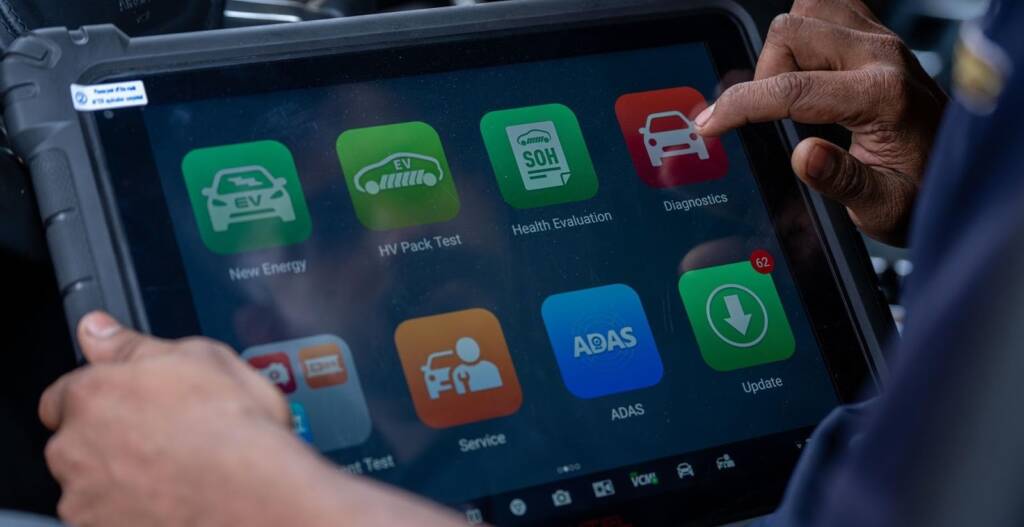
Transparency & Recommendations
We shared photos and short explanatory videos with Alex, explaining the causes behind the issue. Although only the front-right shock absorber was leaking, we advised to replace both front shock absorbers and arms to ensure a balanced suspension performance, something every BMW demands for that perfect driving feel.
Cost Options & Part Selection
When we provided the quote for original BMW parts, Alex found it a bit on the higher side; which is fair, considering OEM parts often demand a premium. So, we suggested an alternative, German manufactured aftermarket parts of equivalent quality and reliability. He appreciated the honesty and agreed to move forward.
The Repair & Final Touches
Throughout the repair, we kept Alex updated via WhatsApp, sharing pictures and videos of every step. Once all components were replaced, we performed a precision wheel alignment using our state of the art computerized Hunter system, followed by a comprehensive road test to ensure the suspension was restored to its smooth, confident BMW character.

At Advance Auto Repairing Services, our expertise goes beyond BMW suspension repair. We offer a complete range of automotive solutions from routine servicing, electrical diagnostics, brake repairs to bodywork, painting, polishing, and ceramic coating.
From the moment your vehicle arrives even if it requires roadside assistance or towing we handle every step with care. Our service advisors share photos, videos, and detailed updates so customers understand exactly what work is being performed.
With certified professionals, advanced diagnostic tools, and a strong commitment to reliability and quality, Advance Auto remains one of the most trusted names in car repair and maintenance in Al Quoz, Dubai.
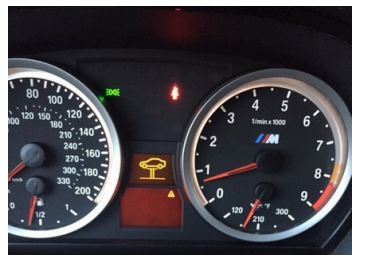
How to Know If Your Suspension Needs
Attention?
A suspension system doesn’t fail overnight, it gives warning signs. Recognizing these early can save you from costly repairs later.
Here are the most common symptoms our technicians recommend customers look out for:
- The car leans or dips when braking or accelerating.
- You feel vibrations or hear knocking/clunking noises from underneath.
- The steering feels heavy or drifts to one side.
- The ride feels unsettled on rough roads.
- The vehicle’s suspension appears to have a lowered stance than normal.
- Uneven tire wear.
- Your car’s dashboard will display warning lights in the event of a faulty air
- suspension and sensor malfunctions.
If you notice any of these warnings, it is advisable not to delay. Minor suspension issues, if not addressed promptly, may cause premature wear of the brakes, steering and tires. A simple repair may eventually turn into a costly one.
Why BMWs Develop Suspension Issues?
- Continuous exposure to Dubai’s intense heat and frequent encounters with speed breakers can accelerate wear in key suspension parts such as rubber bushes, control arms, and air struts.
- Luxury variants such as the 7 Series, 5 Series (with adaptive dampers), and X5 are often equipped with air suspension systems. These rely on air compressors, valve blocks, and inflatable air suspension springs all of which can develop leaks or fail over time, especially under extreme temperatures or when the car is unused for longer periods.
- Aggressive cornering or frequent hard braking puts more stress on the suspension joints, struts, and stabilizer links. Over time, this may lead to uneven tire wear and clunking noises.
- Delaying manufacturer suggested wheel alignment intervals and prolonging shock absorber replacement if essential affects the car’s balance creatin stress and premature wear on the related system components.

About the Author
Arun Kumar is a seasoned Automotive Advisor and Consultant with over a decade of experience serving discerning drivers in Dubai. Known for his expertise, attention to detail, and commitment to excellence, he provides bespoke advice and personalized automotive solutions tailored to the highest standards of car care and maintenance.



